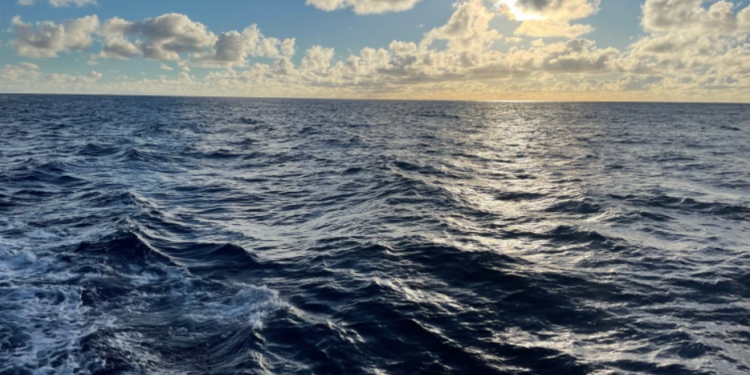Global warming is in short supply these days, and there is increasing interest in how the major surface temperature datasets keep the heating topped up in their published results. The GISS service is run by NASA and in his latest ‘State of the Climate 2022‘ report, Professor Ole Humlum notes that since January 2008, GISS increased the surface air temperature change between January 1910 to January 2000 from 0.45°C to 0.67°C, a boost of 49% over this period.
Humlum accepts the surface temperature record is subject to error and should be corrected whenever possible. But reporting delays and other administrative corrections fall away over time. Most likely, he suggests, changes over the longer term are the result of alterations in the way average monthly values are calculated by the various databases, “in an attempt to enhance the resulting record”.
Of course the sceptical might observe that the enhancements often lower many past records and increase more recent ones, and thus provide a convenient ‘hockey stick’ backdrop for the promotion of the collectivist Net Zero project. Rising temperatures are said to be primarily caused by humans emitting carbon dioxide into the atmosphere, making it somewhat inconvenient that a short 20-year spell of warming started to run out of steam over two decades ago. Nevertheless, the CO2 warming scare remains the heavy artillery needed to promote the radical transformation planned for human society.

The graph above illustrates the significant recent changes made to NASA’s 130-year past record. The hockey stick effect of recent warming has been enhanced by around 80 years of cooling and significant recent warming. Several of the changes made since 2008 are quite substantial, notes Humlum, ranging from +0.2°C to -0.2°C. Similar retrospective alternations have been made by other databases run by the U.S. weather service NOAA and the U.K.’s Met Office. Over the last 10 years, for instance, the Met Office has added about 30% recent warming to its HadCRUT record.
“Frequent and large corrections in a database unavoidably signal a fundamental uncertainty about the correct values,” concludes Humlum. Others are even less charitable. Two distinguished atmospheric scientists, Professors William Happer of Princeton and Richard Lindzen of MIT, recently made a general point that “climate science is awash with manipulated data, which provides no reliable scientific evidence”. Fellow climate scientists Dr. Roy Spencer and Professor John Christy of the University of Alabama have been working on the effect of urban heat on surface temperatures. They recently found a fifth extra warming from this source across 20,000 global weather stations. Despite this bias towards a warming trend, it was also discovered that NOAA was further warming average temperature trends in its urban heat calculations, rather than cooling them to correct for the bias. To say the least, the scientists noted, this finding was “curious”.
Of course global heaters face challenges on a number of fronts. Humlum notes that relative to the period dating back to 1850, during which a little ice age has been lifting, 2022 was warm, but cooler than most years since 2016. In the Arctic, conditions “generally have turned somewhat cooler”. During 2022, sea ice thickness increased along the coasts of Canada and Greenland. Near the Arctic from 55-65°N, the northern oceans have on average experienced a marked cooling down to 1,400 metres depth since 2004. Since 2016, sea ice indicates a “stable or even rising global trend”.
The eight to nine year length of the current temperature pause can be subject to statistical debate. But all the major surface records show a spike caused by one of the most powerful El Niño heat transfer episodes ever recorded up to the start of 2016. Since then, Humlum notes there has been a gradual turning back towards pre-2015 conditions, including an increase in 2019-20, and a subsequent decrease. All the databases show that last year was part of a declining trend since 2016. As we have seen over the last few years, political agitators have reacted to the warming slow-down by promoting ‘record’ one-off temperatures and pseudoscience attributions of individual bad or ‘extreme’ weather events to ‘climate change’.
Of course there has been a lot of general interest in the relationship between rising temperatures and atmospheric levels of carbon dioxide, not least because the ‘settled’ science view that humans control the climate thermostat by burning fossil fuel underpins Net Zero. Humlum briefly looks at the relationship, noting that they vary in concert, but sea surface temperatures are a few months ahead of the global temperature, and 11-12 months ahead of atmospheric CO2. It might be expected to be the other way around if CO2 was the main driver of warming, although other factors might leave the matter open for debate Nevertheless, Humlum concludes that “important changes apparently originate at the sea surface”.
Finally, it seems from Humlum’s observations that the world may be a slightly less windy place than in past periods. Measured energy from global hurricanes and cyclones “is well within the range seen since 1970”. Hurricanes hitting land in the United States remain within the normal range “throughout the entire observation periods since 1851”. Meanwhile on an exposed cape in south-west Norway, the Lista Lighthouse has been measuring wind since 1931. Peak wind strengths were recorded shortly after World War II, and have declined since then.
Chris Morrison is the Daily Sceptic’s Environment Editor.













To join in with the discussion please make a donation to The Daily Sceptic.
Profanity and abuse will be removed and may lead to a permanent ban.